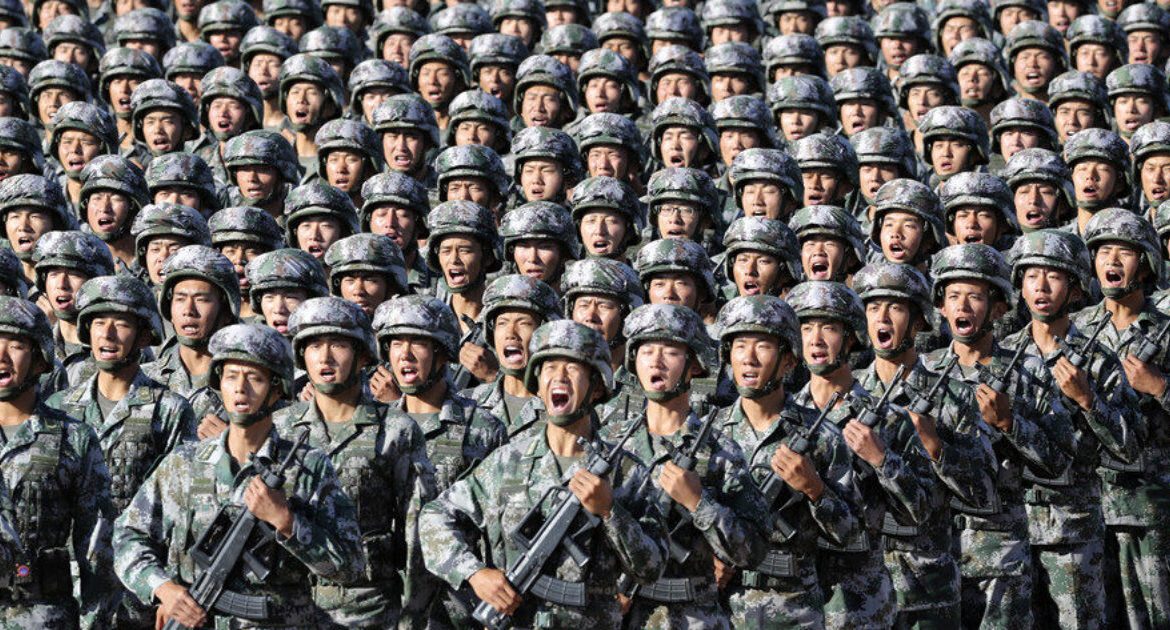
From Tariffs to Taiwan: Trump Implements Deterrence Strategy in the Face of China’s Rise


President Trump’s renewed tariff war with China is escalating tensions far beyond trade policy. Despite a brief truce in May, Trump recently admitted that negotiating with Xi Jinping is “extremely hard,” and both sides have since accused each other of violating the agreement. As economic diplomacy unravels, the broader U.S.–China relationship grows more volatile, raising the risk that Beijing may abandon any remaining hopes for peaceful coexistence.
A conflict between the United States and China is becoming increasingly plausible, and perhaps even inevitable. Tensions in the Taiwan Strait have reached dangerous new heights, fueled by Beijing’s military modernization, its sharpened rhetoric, and its belief that Taiwan and the United States are edging closer to crossing red lines. While China still claims to prefer peaceful reunification, its rapid expansion of capabilities, including amphibious assault craft, cable-cutting tools, and joint-force interoperability, signals preparation for a military solution.
China’s greyzone operations around Taiwan, such as unannounced drills, airspace violations, and undersea cable sabotage, have become routine. This normalization of pressure steadily erodes the status quo and raises the risk of miscalculation or deliberate escalation. The shifting political climate in Taiwan under President Lai Ching-te, who has taken a hard stance against Chinese influence, and a more assertive posture from Washington have further narrowed the space for de-escalation.
Under Trump’s second term, the United States is gradually abandoning its long-held policy of strategic ambiguity. His administration has sharply increased arms sales to Taiwan, removed diplomatic language opposing Taiwanese independence, sent U.S. troops to train Taiwanese forces, and reaffirmed ties through legislation and senior-level visits. While aimed at strengthening deterrence, these steps may convince Beijing that time is running out to forcibly achieve unification before U.S. commitments harden into irreversible guarantees.
The convergence of economic hostilities, military posturing, and diminishing ambiguity is pushing both nations toward a potentially catastrophic confrontation. Whether deliberate or not, the U.S. and China are now on a collision course, and the window to prevent open war may be rapidly closing.
To avoid such an outcome, the United States must urgently implement a strategy of integrated deterrence, combining force posture, military modernization, and stronger regional alliances to ensure the cost of aggression remains prohibitively high.
The United States remains the world’s preeminent military power, with China currently ranking third. Yet under Xi Jinping, the Chinese Communist Party is rapidly expanding and modernizing the People’s Liberation Army (PLA), signaling that Beijing increasingly views conflict as not just possible, but likely. While U.S.–China tensions typically play out through diplomacy, sanctions, or trade disputes, the risk of military confrontation is growing, particularly in flashpoints like the South China Sea, a Chinese blockade of Taiwan, or a full-scale invasion of the island.
Any such conflict would disrupt the global flow of semiconductor chips, cripple supply chains, and trigger severe economic fallout in the United States and Europe. The stakes are high enough that a U.S. military response would be almost certain. Historically, the U.S. has deterred war through strength, what President Reagan called “peace through deterrence.” From small hostile regimes like Libya and Venezuela to Cold War adversaries like the Soviet Union, potential enemies have refrained from direct attack due to overwhelming U.S. military superiority.
Today, deterrence remains essential. The U.S. maintains its advantage not just through technology and force projection, but through integrated deterrence, a strategic combination of military readiness, allied coordination, and regional basing. New efforts, such as the Marine Littoral Regiments and expanded force posture agreements with Japan, the Philippines, and Australia, are central to this doctrine. Sustaining both conventional and nuclear deterrence in the Indo-Pacific requires predictable defense budgets and long-term investment in modernization.
Meanwhile, China is employing a similar approach, aiming to build an anti-U.S. bloc with Russia, Iran, and North Korea. The PLA now fields the world’s largest navy, coast guard, and ground force, and has more combat aircraft than the U.S. Air Force. It is also rapidly advancing in nuclear weapons, cyberwarfare, and space capabilities. To counter this challenge and uphold the rules-based international order, the U.S. must continue to invest in its military, project strength abroad, and reinforce alliances.
Failing to do so risks not only emboldening China but destabilizing the global security framework that has deterred major wars since 1945.
However, a recent report by the Center for Strategic and International Studies (CSIS) warned that the U.S. is not adequately prepared for a potential war with China, especially in the Taiwan Strait. CSIS war games revealed that the U.S. could deplete its stockpile of precision-guided munitions, such as long-range anti-ship missiles, within the first week of conflict. This vulnerability is compounded by a fragile defense industrial base that lacks the surge capacity to rapidly replenish munitions and equipment.
Production bottlenecks, supply chain fragility, and overreliance on single-source suppliers further hinder America’s readiness. These limitations are especially dangerous given that China is acquiring advanced weapons at a rate five to six times faster than the U.S. Geographic realities make the situation even more precarious, any Chinese blockade of Taiwan could severely disrupt American resupply efforts, turning an initial shortfall into a decisive strategic failure.
To effectively deter aggression and prepare for sustained conflict, the U.S. must overhaul its defense production system. This includes expanding manufacturing capacity, addressing acquisition bottlenecks, and securing diversified supply chains. Immediate reforms should include multiyear contracts for key munitions, modernizing the Defense Production Act, and removing export restrictions that delay arms deliveries to partners like Taiwan.
The post From Tariffs to Taiwan: Trump Implements Deterrence Strategy in the Face of China’s Rise appeared first on The Gateway Pundit.
